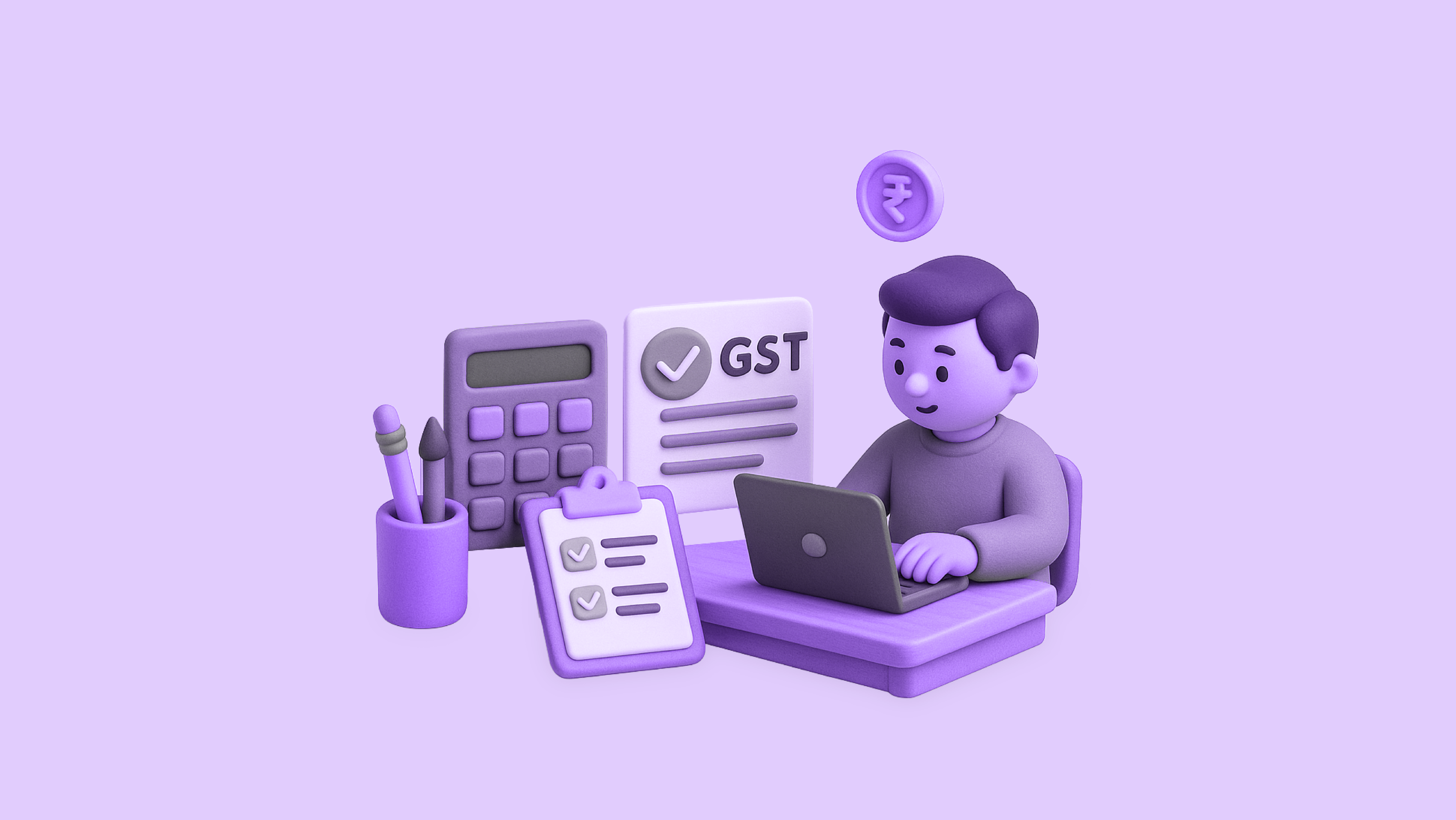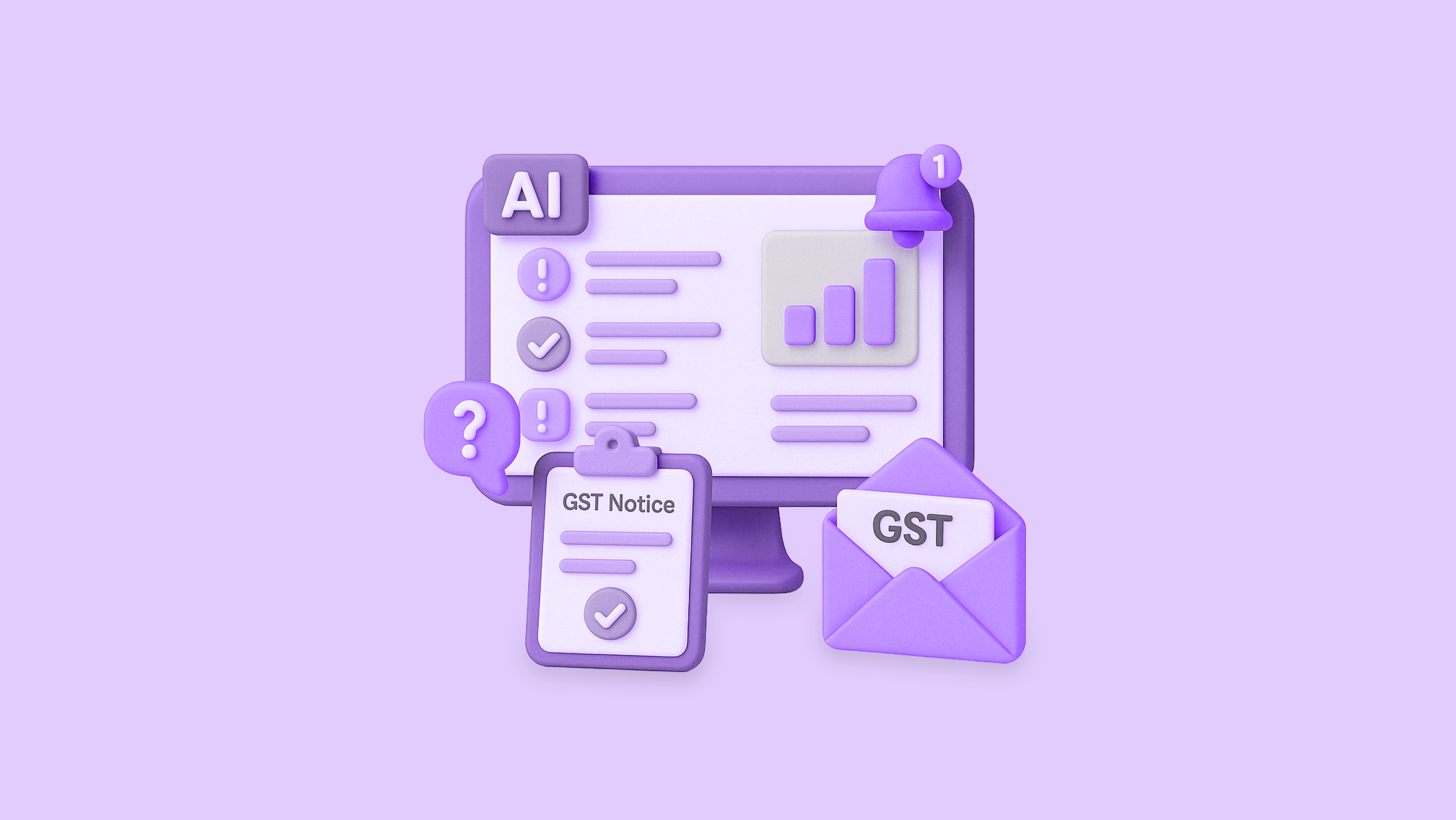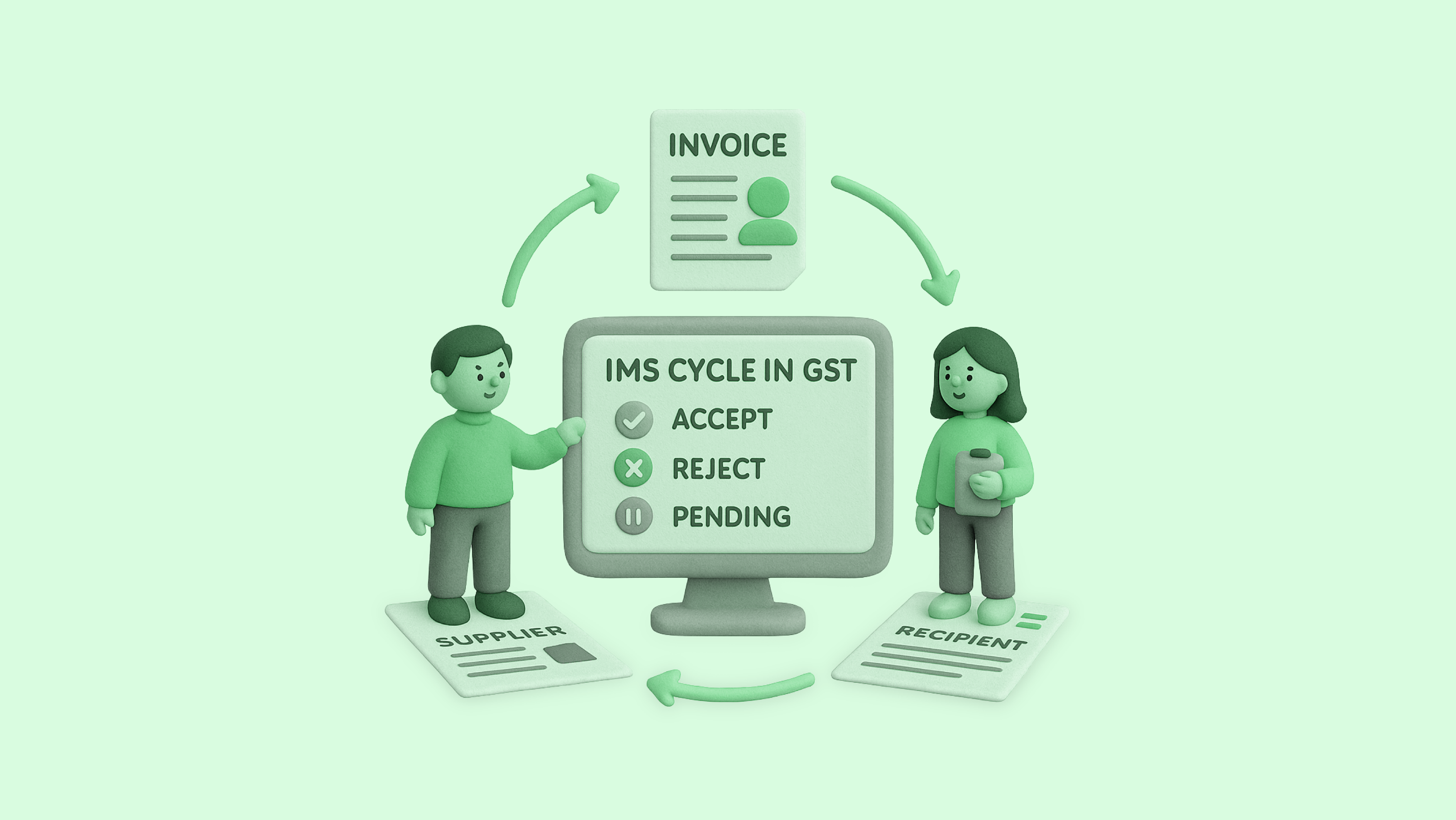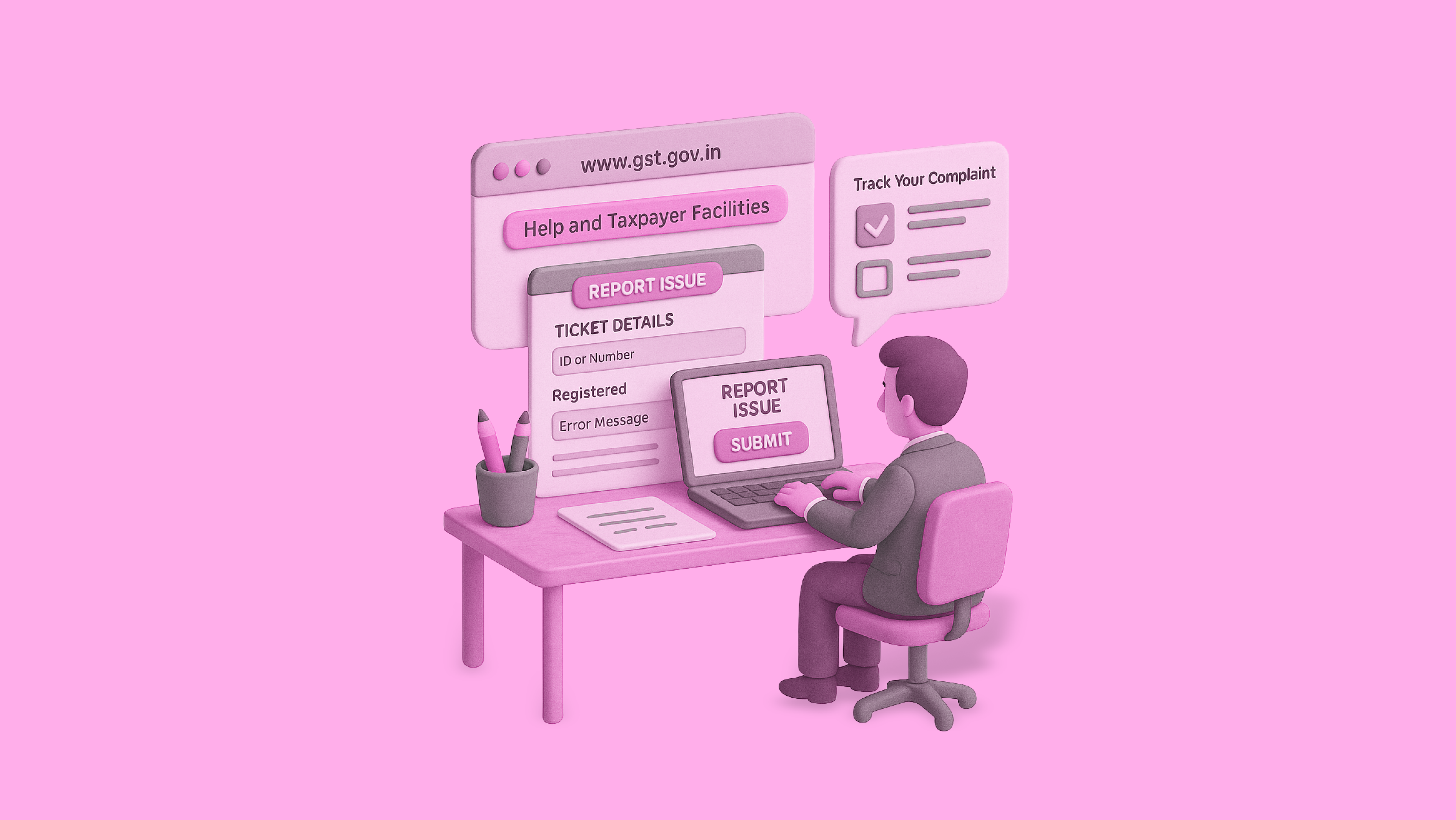Tax compliance in India has evolved from being a periodic task to a continuous process that demands accuracy, agility, and real-time visibility. As businesses grow, managing multiple registrations, reconciling vast invoice data, and keeping pace with frequent regulatory changes can easily overwhelm finance teams.
This is where a purpose-built GST software steps in – not just as a filing utility, but as a digital command center for tax operations. With capabilities like input tax credit (ITC) reconciliation, multi-GSTIN management, ERP integration, and cloud-based compliance, modern GST tools are redefining how businesses stay compliant while protecting working capital.
The Realities of GST Compliance Today
Every finance professional knows that GST compliance goes far beyond GSTR-1 and GSTR-3B filing. The true challenge lies in the layers underneath: accurate reconciliations, vendor compliance tracking, and cross-GSTIN management.
Here are some common operational bottlenecks:
- Unclaimed or mismatched ITC: Inaccurate or missing supplier filings can block legitimate credits and hurt cash flow.
- Fragmented multi-GSTIN operations: Enterprises with multiple state registrations struggle to maintain a consolidated compliance view.
- Manual reconciliations and Excel dependency: Teams still spend hours matching data between books and the GST portal, risking errors.
- ERP disconnect: Without proper integration, invoice and return data often remain siloed, creating duplication and delays.
- Limited audit trails: During assessments or departmental queries, retrieving supporting data becomes a manual nightmare.
These issues often lead to cash flow blockage, late filings, or even notices, all avoidable with the right technology stack.
Simplifying ITC Reconciliation with Automation
Reconciliation is the cornerstone of GST compliance, especially when ITC directly impacts working capital. A GST software for input tax credit reconciliation helps businesses automatically match their purchase register with GSTR-2A and GSTR-2B data, identifying mismatches in supplier GSTINs, invoice numbers, and tax amounts.
Some advanced reconciliation tools also:
- Categorize discrepancies: Pending, unclaimed, or mismatched credits are flagged instantly.
- Enable vendor follow-ups: Auto-generated exception reports help you nudge suppliers for corrections.
- Calculate eligible credits accurately: Prevents over-claiming or missing out on valid credits.
- Provide audit-ready reports: Ensures traceability and documentation for every claimed credit.
By automating reconciliation, businesses not only save time but also gain accuracy and confidence in their monthly returns.
Managing Multi-GSTIN Operations with Ease
Large enterprises and service providers often operate under multiple GST registrations across India. Handling compliance manually for each GSTIN can create duplication, missed filings, and inconsistent record-keeping.
A multi-GSTIN GST software addresses these issues by:
- Offering a single dashboard to track all filings, returns, and reconciliations across entities.
- Allowing entity-level and consolidated reporting, giving leadership both macro and micro insights.
- Automating inter-branch transactions and e-invoicing flows.
- Maintaining uniform compliance health across all GSTINs.
This consolidated control eliminates redundancies and ensures every registration meets its compliance obligations on time.
Why Cloud-Based Compliance Is the Smarter Way Forward
A cloud-based GST compliance tool in India brings flexibility and scalability that on-premise setups can’t match.
Benefits include:
- Real-time access: Teams, auditors, and consultants can collaborate securely from anywhere.
- Automatic regulatory updates: The system adapts to government schema or form changes without manual intervention.
- Secure data storage: Centralized databases with encryption and access control ensure compliance with ISO and SOC standards.
- Scalability: As your transaction volume or number of GSTINs grows, the system scales without additional IT infrastructure.
For distributed teams, especially CA firms or enterprises with multiple business units, the cloud ensures business continuity and unified compliance oversight.
Seamless ERP Integration for End-to-End Accuracy
Disconnected systems are one of the biggest causes of compliance inefficiency. With GST software integration with ERPs, businesses can eliminate manual imports, reduce data errors, and achieve real-time alignment between books and returns.
Integrated workflows enable:
- Automated data sync: Sales and purchase invoices flow directly from ERP to GST software.
- Reduced duplication: Eliminates repetitive uploads and manual reconciliation.
- Accurate reporting: Ensures return data always reflects the actual financial position.
- One-click return preparation: Auto-populated return forms minimize manual intervention.
ERP-integrated GST software transforms compliance from a reactive process into an embedded part of your financial ecosystem.
Why Optotax by OPEN Fits the Modern Compliance Stack
Optotax by OPEN has been purpose-built for the realities of Indian businesses – CA firms managing multiple clients, enterprises with several GSTINs, and finance teams seeking automation without complexity.
Here’s how it aligns with the modern compliance landscape:
- AI-powered reconciliation: Automates ITC matching, saving hours of manual work.
- Multi-GSTIN support: Enables centralised monitoring across all branches or entities.
- Cloud-first platform: Allows finance teams and partners to collaborate in real time.
- ERP compatibility: Integrates seamlessly with accounting systems for accurate, continuous data flow.
- Audit readiness: Generates detailed reconciliation and filing reports for every GSTIN.
While compliance may be a legal necessity, Optotax helps turn it into a financial advantage – reducing errors, improving cash flow, and freeing bandwidth for strategic work.
Turning Compliance into a Competitive Edge
The right GST software doesn’t just file returns; it creates a single source of truth for all tax data, strengthens governance, and safeguards cash flow.
To summarise:
- Automation simplifies reconciliation and improves ITC accuracy.
- Cloud-based systems offer accessibility and reliability.
- Multi-GSTIN support consolidates operations across locations.
- ERP integration ensures consistent, error-free reporting.
By adopting an intelligent GST software like Optotax by OPEN, businesses can stay future-ready, audit-ready, and financially steady, making compliance not just simpler, but smarter.
FAQs
Q1. How does GST software improve ITC accuracy?
A GST software improves Input Tax Credit (ITC) accuracy by automatically syncing purchase registers with GSTR-2A and GSTR-2B data, applying intelligent matching rules, and flagging exceptions with vendor-wise details. This ensures that all eligible credits are accurately identified and claimed without errors or omissions.
Q2. What’s the advantage of multi-GSTIN support?
Multi-GSTIN support allows businesses to centrally track compliance across multiple registrations and standardize workflows for all entities. This reduces duplication, minimizes filing errors, and enables faster, more coordinated return submissions.
Q3. Why prefer a cloud-based GST compliance tool in India?
A cloud-based GST compliance tool in India enables secure collaboration among finance teams, CA partners, and auditors from any location. It also offers automatic regulatory updates, scalability as the business grows, and lower IT maintenance costs compared to traditional on-premise systems.
Q4. How does ERP integration help?
ERP integration ensures that GST returns remain aligned with the company’s accounting records in real time. It eliminates manual data uploads, reduces reconciliation errors, and provides better accuracy, transparency, and auditability across all compliance workflows.
Q5. What reports matter most to finance leaders?
The most valuable reports for finance leaders include ITC utilization and ageing summaries, mismatch resolution trends, vendor compliance scorecards, and entity-level filing health dashboards. These insights help monitor compliance performance and improve decision-making.





